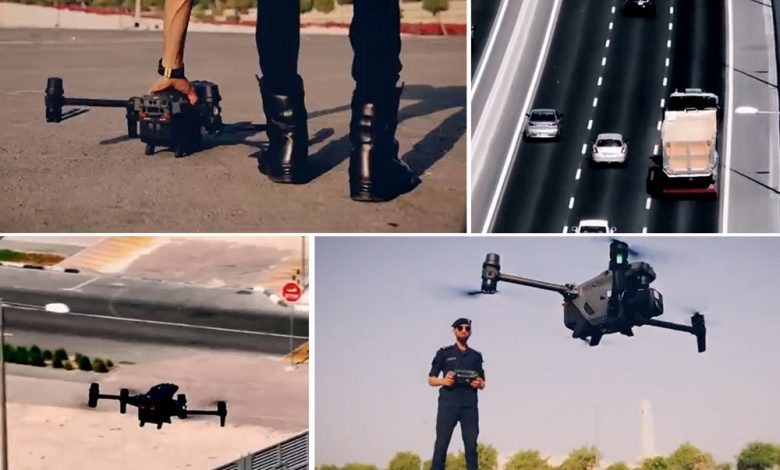Use of drones to monitor traffic offences

The General Directorate of Traffic has integrated drones into its traffic management strategy, enhancing the existing network of cameras and radars to monitor road violations more effectively.
Recently, the Department of Transportation released a video on its Twitter account showcasing the capabilities of these drones. The video description highlighted the various violations drones are tasked with monitoring, including trucks operating during peak hours, improper load securing, unauthorized area entry, and lane violations.
In a series of tweets, the Department elaborated on how drones are being used to improve traffic organization and management. The drones work alongside traditional traffic patrols to ensure a smooth and continuous traffic flow. They play a crucial role in identifying and addressing truck-related offenses throughout the country, covering all regions.
The deployment of drones signifies a significant step forward in traffic enforcement technology. Their ability to provide real-time surveillance and gather data on traffic patterns and violations helps traffic authorities respond more swiftly and accurately. This not only aids in immediate enforcement actions but also contributes to long-term traffic planning and safety measures.
Drones offer a high vantage point and mobility that traditional patrols lack, allowing them to cover large areas quickly and monitor situations that might be challenging for ground units. This aerial perspective is beneficial in spotting violations that are not easily visible from the ground, such as improper load securing or unauthorized area entries.
By incorporating drones into their operations, the traffic authorities aim to reduce the number of road accidents and improve overall traffic flow. The constant monitoring capability of drones ensures that violations are detected as they happen, allowing for prompt intervention. This technology also serves as a deterrent, as drivers are more likely to adhere to traffic laws, knowing that drones are monitoring their actions.
Moreover, the data collected by drones can be analyzed to identify trends and hotspots for violations, enabling the Department of Transportation to implement targeted measures to address specific issues. This data-driven approach ensures that resources are allocated efficiently and that traffic management strategies are continually optimized.
In summary, the use of drones by the General Directorate of Traffic represents a modern approach to traffic management and enforcement. By augmenting traditional methods with advanced technology, traffic authorities can enhance road safety, ensure compliance with traffic regulations, and maintain a steady flow of traffic across the nation.






